The Moonscape in Our Backyards: Chuck Avery at MCP
Alex Starace visits the Minnesota Center for Photography and finds the "Landscape of Progress" exhibition to be wonderfully focused and intelligent.
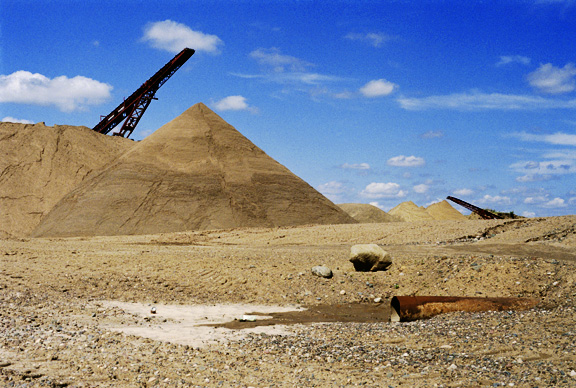
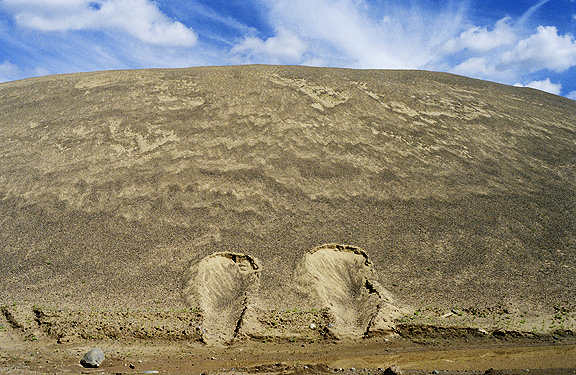
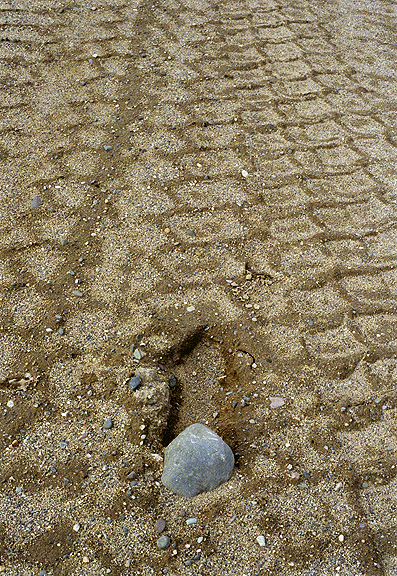
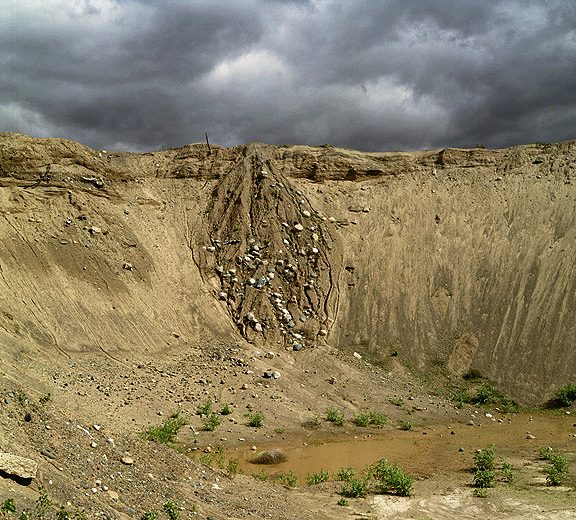
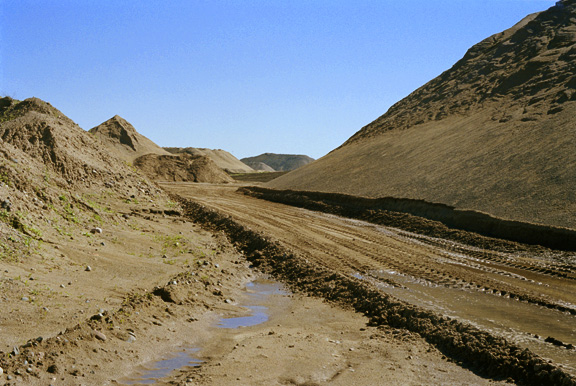
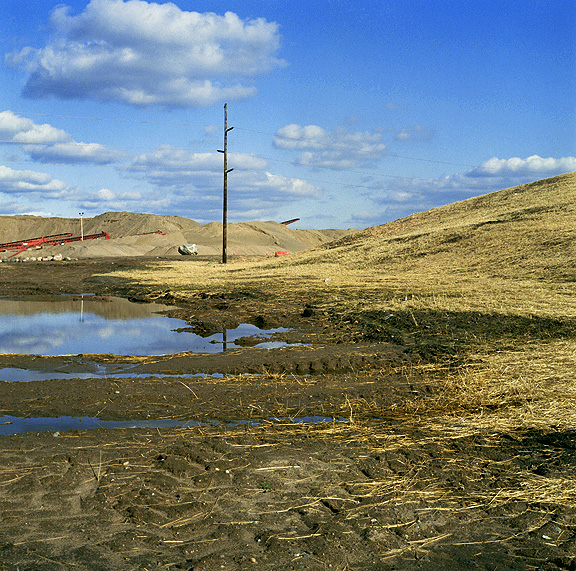
In trying to capture an idea, many artists get overexcited – instead of diligently focusing on one aesthetic goal, they shoot scatttershot, attempting to “say something” about five or six topics at once, with the result being that they never achieve any goal: the idea they were originally trying to capture escapes unharmed and their resulting art is a confusing mish-mash of unsuccessful attempts. This mistake of overextension happens quite frequently, which is why Chuck Avery’s show, “Landscape of Progress,” is so refreshing. Avery, whose exhibition is currently at the Minnesota Center for Photography, trains on one goal, waits for his opportunity to achieve it, and then emphatically hits the mark.
In just twenty photographs he convincingly documents the beauty and wonder that can be found in a strip-mined area in suburban Maple Grove. The city has decided to develop an eight-square-mile tract of land that is currently sand and gravel, with the eventual objective of complete development. But Avery doesn’t get distracted by the housing developments themselves, nor their social-political implications. He sticks to the land, to its shape, and to the aesthetic of a large-scale facelift. In Vista (2005), we see a view of tremendous mounds of sand, paths for construction vehicles and bright green grass, all underneath a scalloped, cloudy sky. It’s reminiscent of some of the great land formations of the American West, but creepier – the makeshift roads and man-made piles make it gorgeous, post-apocalyptic.
In Impressions (2005), a hill of sand takes up the bottom three-fourths of the picture frame, wavy and faded, interrupted only by two ear-shaped gouges, while a brilliantly luminous, cloud-streaked sky stretches like a banner across the top of the hill. The contrast between the bright, smooth sky and the grainy, aggregate sand gives the shot a surreal, exciting beauty: these are huge, elemental forces we’re amongst. In a similar vein is Earth (2005), which features the wall of an excavation pit. On the wall is a huge almond-shell-shaped protuberance, below which is a pool of mud and above which is a low, ominously gray sky. It looks like a scene from The Lord of The Rings, or some other high-end science fiction movie where the characters trudge through mile after mile of vast, bland, depressing (yet stunningly beautiful) landscape. In short, if you were a thirteen-year-old boy, Avery captures the part of Maple Grove that you’d love to explore.
This is what makes his photos so successful: he brings out the wonder of a landscape that is almost always fenced off, shunned, or forgotten about. For example, his Pyramidal (2005) captures an enormous pyramid of gravel fronted by five stones and tinged with a pinkish pre-dusk light. The bright sharp colors and symmetrical shapes are fit for a postcard. So what if it’s a transient mound of construction material? Or Tracks (2005), which captures the pattern of bulldozer tires across brown dirt – it’s striking, even if it’s artificial. Avery’s work affirms that these are relatively common sights, yet in our day-to-day lives we don’t see them – we drive past them or ignore the very moonscapes in our backyards. Nowhere is Avery more aware of this than in his photograph, Stop (2005), which features a stoplight and a closed red gate marking a dead end. Beyond the gate and stoplight are trees and what looks like construction, but we’re not allowed past – it’s not permitted to laypeople. Avery includes this photo as a contrast to what he is permitting: his images allow us to revel in change, force and elements. If Robert Smithson made a name for himself by altering the earth to create a form of art, Avery points out that such monumental alterations happen all around us – all we have to do is look for them.
And so Avery wisely avoids images of actually completed developments. (In only one of his twenty photos, Wash Up (2005), are houses visible, and only on the periphery.) And despite the predominance of machines and mounds of gravel, there are no pictures that include humans. That he doesn’t overtly address the politics of suburban development strengths Avery’s statement. He never wavers from showing how viscerally exciting it is to scramble up and across and around moved earth. The scale is so much larger than humans are used to and the components (dirt, gravel, mud, sky, hills) are so much more basic – his photos highlight the enormity of both the natural world and man’s power over it. He doesn’t dilute his message by trying to tack on philosophical arguments, emotional pleas, or polemics. As a result, Avery’s vision comes across as original, awe-inspiring and intelligent. And, because he doesn’t touch upon issues that he can’t tackle in this project, he leaves himself open to the possibility of effectively tackling other issues (such as the politics surrounding development) in future projects – his focused skill in “Landscape of Progress” gives him more intellectual and aesthetic credibility in his next undertaking.